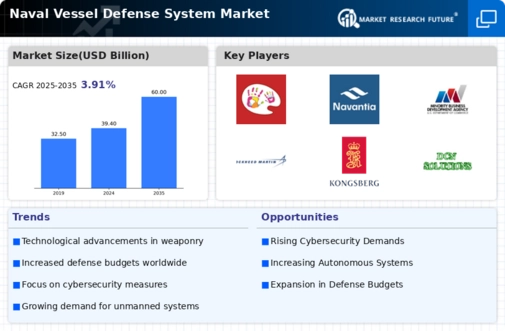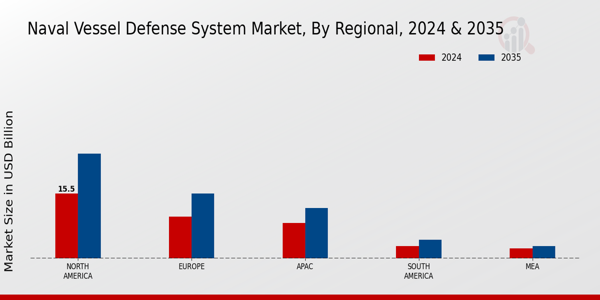Naval Vessel Defense System Market Summary
As per MRFR analysis, the Naval Vessel Defense System Market Size was estimated at 39.37 USD Billion in 2024. The Naval Vessel Defense System industry is projected to grow from 40.91 USD Billion in 2025 to 60.04 USD Billion by 2035, exhibiting a compound annual growth rate (CAGR) of 3.91 during the forecast period 2025 - 2035.
Key Market Trends & Highlights
The Naval Vessel Defense System Market is poised for substantial growth driven by technological advancements and rising geopolitical tensions.
- The integration of advanced technologies is transforming naval defense capabilities, enhancing operational effectiveness.
- Cybersecurity measures are increasingly prioritized to protect naval systems from evolving threats.
- Collaborative defense initiatives are gaining traction, particularly among nations in North America and the Asia-Pacific region.
- Rising geopolitical tensions and increased maritime security concerns are key drivers propelling the market forward.
Market Size & Forecast
| 2024 Market Size | 39.37 (USD Billion) |
| 2035 Market Size | 60.04 (USD Billion) |
| CAGR (2025 - 2035) | 3.91% |
Major Players
Lockheed Martin (US), Northrop Grumman (US), Raytheon Technologies (US), BAE Systems (GB), Thales Group (FR), Leonardo (IT), General Dynamics (US), Huntington Ingalls Industries (US), Kongsberg Gruppen (NO)


















Leave a Comment